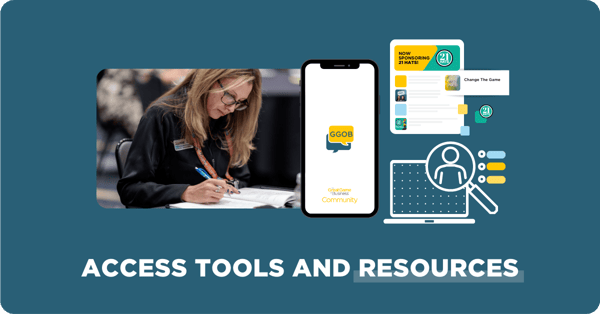Who Created the Numbers?
If you approached an employee at your company and asked them, “Who creates the financial numbers in your company?” what would they tell you? In almost every case, they’d tell you the CFO, the accounting department—the “numbers guy.” In reality, employees create the numbers. With every decision they make and every action they take, they are creating the financial numbers in the company.
Too often in business, we fail to show the players the big picture—the overall score of The Game. We tend to try to manage from the sidelines, focusing on individual performance and process results. Meanwhile, the employees—who have their hands on the ball and are most likely to change the score—are left wondering, “What’s the score?”
The Bowling League
Imagine a vice president who entered his team in a Thursday night bowling league. The VP figured he knew a thing or two about getting the most out of people. He decided he’d run the team the same way he ran the business.
 On the night of the first competition, he rigged up his team’s alleys with a big black curtain across the end of the lane, concealing the pins. Behind the curtain, he set up lights and a camera. Then he positioned himself behind the bowlers, where he could watch the pins on a monitor.
On the night of the first competition, he rigged up his team’s alleys with a big black curtain across the end of the lane, concealing the pins. Behind the curtain, he set up lights and a camera. Then he positioned himself behind the bowlers, where he could watch the pins on a monitor.
The first bowler was a little confused by this, but he figured the boss probably knew what he was doing. So, he grabbed a ball, took his steps, and let it fly. The ball rolled down the alley and under the curtain. The bowler heard the sound of pins crashing and falling. He turned around, looked up at the VP, and asked, “How’d I do?”
The VP peered into his monitor and frowned. “Aim a little more to the left.”
The bowler rolled his second ball and heard nothing. The VP’s frown turned into a scowl. “Too far, you idiot!” he yelled. It went like that all night long.
By the end of the evening, the VP’s team was more than ready to go. This was too much like work. The first bowler, however, still eager to please, asked one more time how he’d done. The VP was shutting off his monitor and gathering up the equipment. “Don’t worry about it,” he said. “I’ll let you know in six months at your performance review.”
“But wait!” the other bowlers chimed in. “How did we all do? What was the score?”
The VP glared. “That’s really a question for executive management to worry about,” he said. “Besides, we won’t really know until
the end of the season, when the scorekeepers tally up the totals.” The VP walked away down the hall, lonely with the weight of responsibility.
He muttered under his breath, “What was the score?”
Under this scenario, the people who have their hands on the ball and the greatest opportunity to change the score and win The Game have no idea where to take aim. In business, we often forget that the curtain in front of the pins is the barrier. Remove it, and let the players figure out how to change the score—and win The Game.
Although this story clearly explains the benefit of opening the books and showing your people the real score of The Game, there is still fear from many business owners about opening it up. A real fear—and as a business leader, you need to get comfortable with opening things up.
.png)













